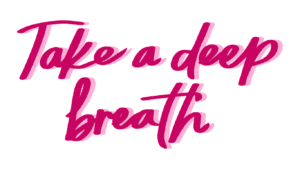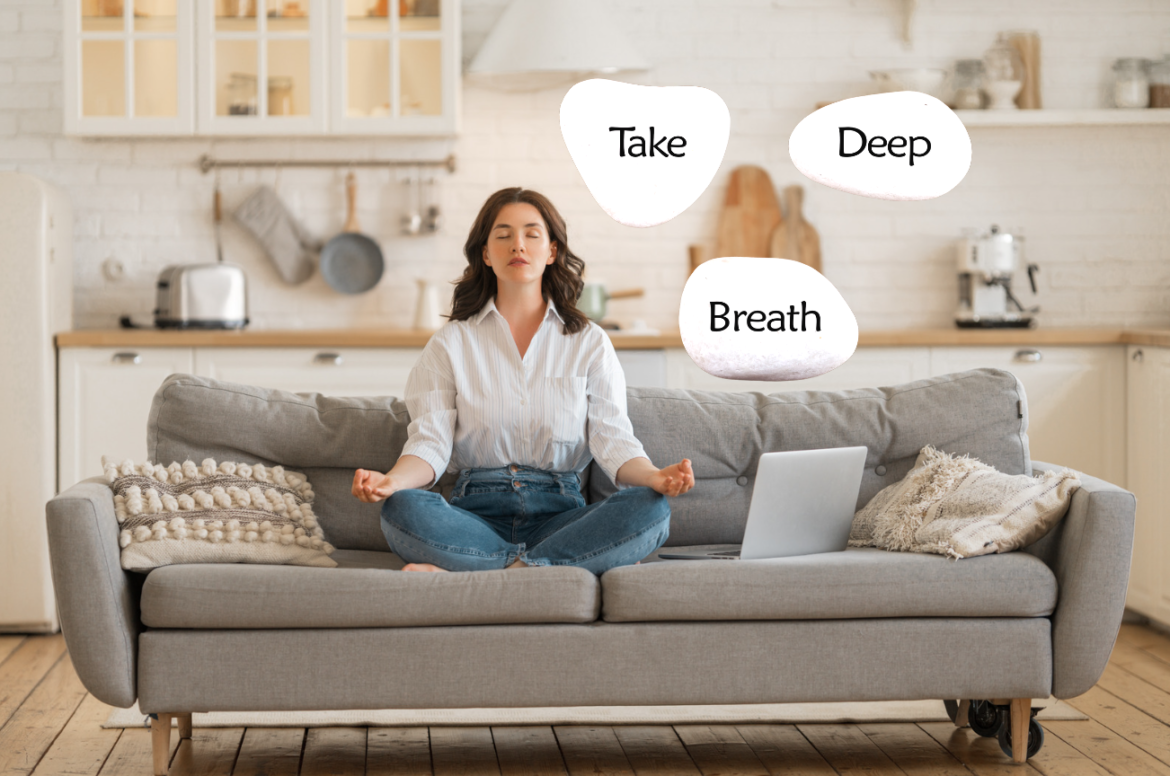Stress, anxiety, and the pressures of daily life are common experiences that can have negative effects on our health, such as headaches, muscle tension, and even chronic illnesses. There are many ways to cope with stress, but one of the most effective relaxation techniques is the Deep Breathing Technique. Deep breathing exercises can help reduce stress and anxiety, promote relaxation, and are easy to learn. Studies have confirmed the effectiveness of deep breathing.
Scientific Validation of Deep Breathing
A study published in the International Journal of Yoga Therapy concluded that practicing sukha pranayama (a type of deep breathing) at a rate of 6 breaths per minute can lower heart rate and blood pressure in hypertensive patients within just 5 minutes.
Understanding the Science Behind Deep Breathing
The Science behind Deep Breathing
Understanding the science behind deep breathing is important to understand the physiological stress response. When we encounter a stressful situation, our sympathetic nervous system is activated, releasing stress hormones such as cortisol and adrenaline. These hormones trigger the “fight or flight” response, causing our heart rate to increase, blood vessels to constrict, and muscles to tense up.
Deep breathing activates the parasympathetic nervous system, responsible for the body’s relaxation response. We can slow down our heart rate, lower blood pressure, and relax our muscles by taking slow, deep breaths. This results in a decrease in stress hormones and an increase in the production of endorphins, the body’s natural painkillers.
Explore Different Deep Breathing Techniques
Different Deep Breathing Techniques 
Deep breathing exercises are an easy and effective way to reduce stress and anxiety and promote relaxation. With this complete and comprehensive step-by-step guide, you can learn different breathing techniques and how to perform them correctly.
1- Diaphragmatic Breathing:
Diaphragmatic breathing, also known as belly breathing or abdominal breathing, involves breathing deeply into your belly, allowing it to expand fully. Focus on your breath and try to relax your body as you breathe deeply. Practice diaphragmatic breathing for at least 5-10 minutes daily to improve your breathing pattern. You can also practice diaphragmatic breathing while lying down to help you fall asleep faster.
Steps to Perform Diaphragmatic Breathing:
Step 1: Find a comfortable seated position with your feet flat on the ground and your hands resting on your belly.
Step 2: Inhale deeply through your nose, filling your belly with air.
Step 3: Hold your breath for a few seconds.
Step 4: Exhale slowly through your mouth, pushing out all the air from your belly.
Step 5: Repeat the cycle for several minutes.
2- Box Breathing:
Box breathing, also known as four-square breathing, involves inhaling for a specific count, holding the breath for the same count, exhaling for the same count, and then holding the breath again for the same count, forming a box-like pattern. You can visualize a box in your mind as you breathe in and out, following the pattern. You can also adjust the count of your breaths to suit your comfort level.
Box breathing is a great technique for reducing stress and anxiety, improving focus and concentration, and promoting relaxation.
Steps to Perform Box Breathing:
Step 1: Find a quiet and comfortable place to sit or lie down.
Step 2: Take a few deep breaths to relax your body.
Step 3: Inhale deeply through your nose for a count of 4, filling your lungs with air.
Step 4: Hold your breath for a count of 4.
Step 5: Exhale slowly through your mouth for a count of 4, emptying your lungs.
Step 6: Hold your breath for a count of 4.
Step 7: Repeat this cycle for several minutes or until you feel relaxed.
3- Equal Breathing:
Equal Breathing, also known as Sama Vritti Pranayama. It involves inhaling and exhaling for the same duration through the nose. To perform this exercise, it is important to focus on breathing deeply and evenly throughout the entire practice and keep focusing on counting your breaths to maintain a regular rhythm. You may find it helpful to mentally count the duration of each breath, or to visualize the breath moving in and out of your body. You can adjust the count of your breaths to suit your comfort level. Equal breathing can be done at any time of the day to promote relaxation and balance.
This technique promotes balance and calmness in the body and mind.
Steps to Perform Equal Breathing:
Step 1: Find a comfortable seated position and relax your body.
Step 2: Close your eyes and begin to breathe in through your nose for a count of four.
Step 3: Hold your breath for a count of four.
Step 4: Exhale through your nose for a count of four.
Step 5: Repeat this cycle for several minutes or until you feel relaxed.
4- Alternate Nostril Breathing:
Alternate nostril breathing, also known as nadi shodhana pranayama, is a technique that involves alternating between breathing through the left and right nostrils, using your fingers to close off one nostril at a time. Focus on your breath and try to breathe deeply into your belly. Start with short sessions of 5-10 minutes and gradually increase the duration as you become more comfortable with the practice.
Alternate nostril breathing is believed to help balance the flow of energy in the body, as it involves breathing through each nostril alternatively. This technique can help to reduce stress and anxiety, balance the nervous system, and promote relaxation.
Steps to Perform Alternate Nostril Breathing:
Step 1: Find a comfortable seated position with your back straight and your left hand resting on your left knee.
Step 2: Place your right hand on your nose, using your thumb to close your right nostril and your ring finger to close your left nostril.
Step 3: Inhale deeply through your left nostril.
Step 4: Close your left nostril with your ring finger and exhale slowly through your right nostril.
Step 5: Inhale deeply through your right nostril.
Step 6: Close your right nostril with your thumb and exhale slowly through your left nostril.
Step 7: Repeat the cycle for several minutes, alternating nostrils for each inhale and exhale.
5- Pursed Lip Breathing:
Pursed lip breathing involves breathing in through your nose and breathing out through pursed lips as if you are blowing out a candle. As you practice pursed lip breathing, focus on exhaling slowly through your pursed lips to create a gentle resistance. This can help to keep your airways open and reduce shortness of breath. You can also try counting to yourself as you inhale and exhale to maintain a steady rhythm.
This technique can be helpful for people with respiratory conditions, such as chronic obstructive pulmonary disease (COPD), as it can help to slow down breathing and improve oxygen exchange.
Steps to Perform Pursed Lip Breathing:
Step 1: Find a comfortable seated position with your feet flat on the ground and your hands resting on your lap.
Step 2: Inhale deeply through your nose for a count of 2-3 seconds.
Step 3: Pucker your lips like you are about to blow out a candle or whistle.
Step 4: Exhale slowly through your pursed lips for a count of 4-6 seconds.
Step 5: Repeat the cycle for several minutes.
Precautions and Tips:
Although deep breathing is generally safe, it may not suit everyone. Consult your healthcare provider before practicing deep breathing if you have any respiratory or cardiovascular conditions. Also, avoid practicing deep breathing while driving or operating heavy machinery, as it can cause dizziness or lightheadedness.
Here are some tips to enhance your deep breathing practice:
- Find a quiet, comfortable place where you won’t be interrupted.
- Make sure you’re wearing comfortable clothing that won’t restrict your breathing.
- Practice deep breathing for at least five minutes daily, ideally in the morning or evening.
- Focus on your breath and try to quiet your mind.
- Allow your breath to flow naturally, and avoid trying to force it.
- Incorporate deep breathing into your daily routine, such as before bed or during your lunch break.
- Experiment with different techniques to find what works best for you.
- Use guided deep breathing exercises or apps to help you get started.
- If you get distracted, gently bring your attention back to your breath.
- Don’t worry about getting it “right” – the practice of deep breathing is more important than the technique itself.
FAQs
Q: How often should I practice deep breathing?
Ans: It’s recommended to practice deep breathing for at least 10-15 minutes daily to experience its benefits.
Q: Can deep breathing help with anxiety?
Ans: Yes, deep breathing can help reduce anxiety by triggering the body’s relaxation response and reducing the levels of the stress hormone cortisol.
Q: Is deep breathing suitable for everyone?
Ans: Although deep breathing is generally safe, if you have any respiratory or cardiovascular condition, consult with your healthcare provider before practicing deep breathing.
Q: How does deep breathing improve sleep quality?
Ans: Deep breathing can improve sleep quality by reducing stress and promoting relaxation, helping you fall asleep faster and wake up feeling refreshed.
Q: Can I practice deep breathing while driving or operating heavy machinery?
Ans: No, it’s not recommended to practice deep breathing while driving or operating heavy machinery, as it can cause dizziness or lightheadedness.
Conclusion:
Deep breathing is a simple yet powerful technique that can help improve your physical and mental well-being. By taking just a few minutes each day to practice deep breathing, you can reduce stress and anxiety, improve lung function, boost your immune system, and enhance your overall well-being. Try incorporating deep breathing into your daily routine and experience the amazing benefits for yourself.
If you’re interested in learning more about the amazing benefits of deep breathing, be sure to check out our blog post dedicated to the topic. With just a few minutes of practice each day, you can experience the transformative power of deep breathing for yourself.
Further Recommendations:
Dive deeper into the science and art of breathing with these insightful books. Each offers a unique perspective on the importance of breath for overall health, providing practical techniques and knowledge to enhance your well-being.
- “Body by Breath” by Jill Miller: Over 100 techniques to master the body-breath connection and enhance resilience.
- “Breath” by James Nestor: Explore the new science of breathing for overall health improvement.
Discover the art and science of deep breathing for a healthier, more relaxed you.
